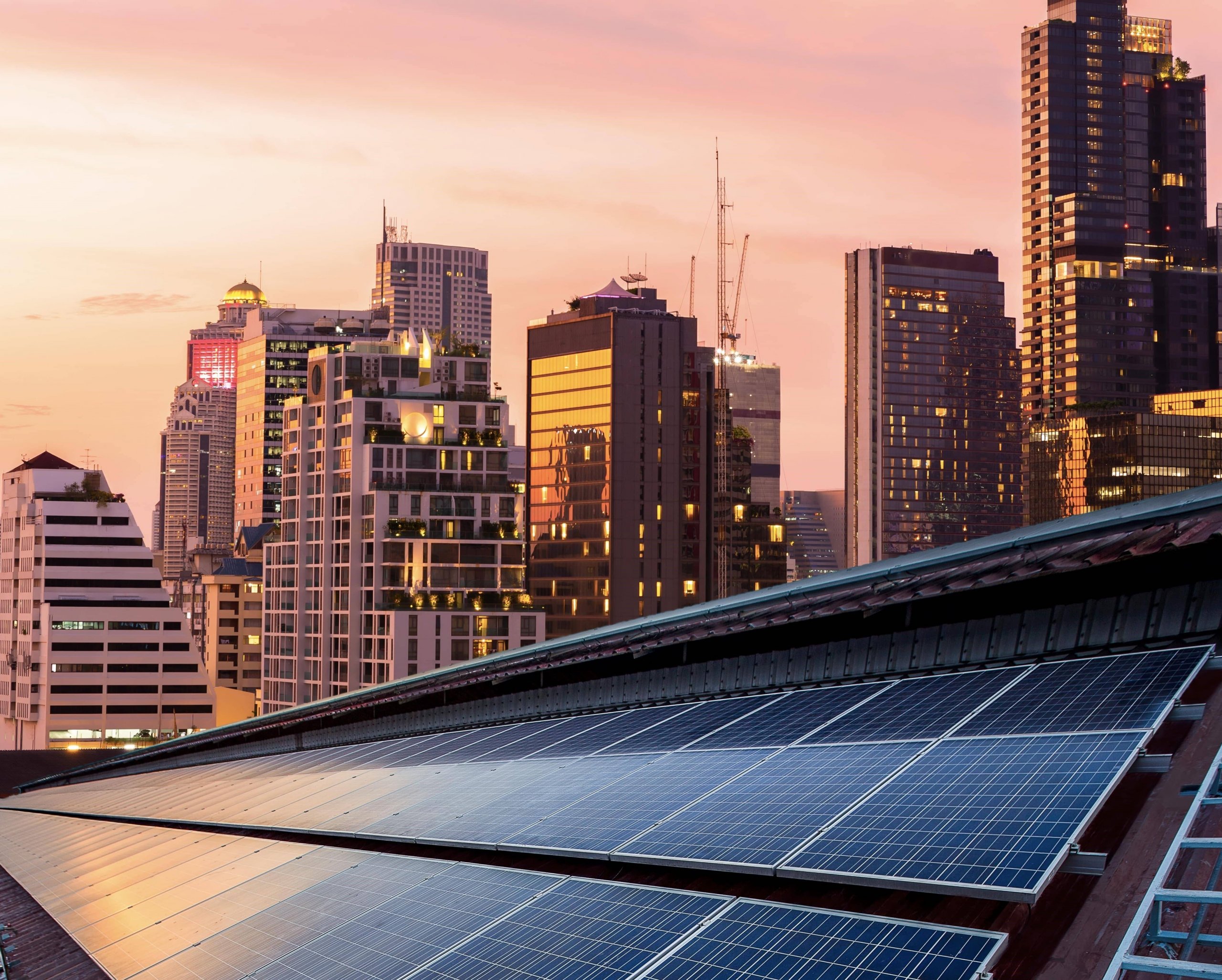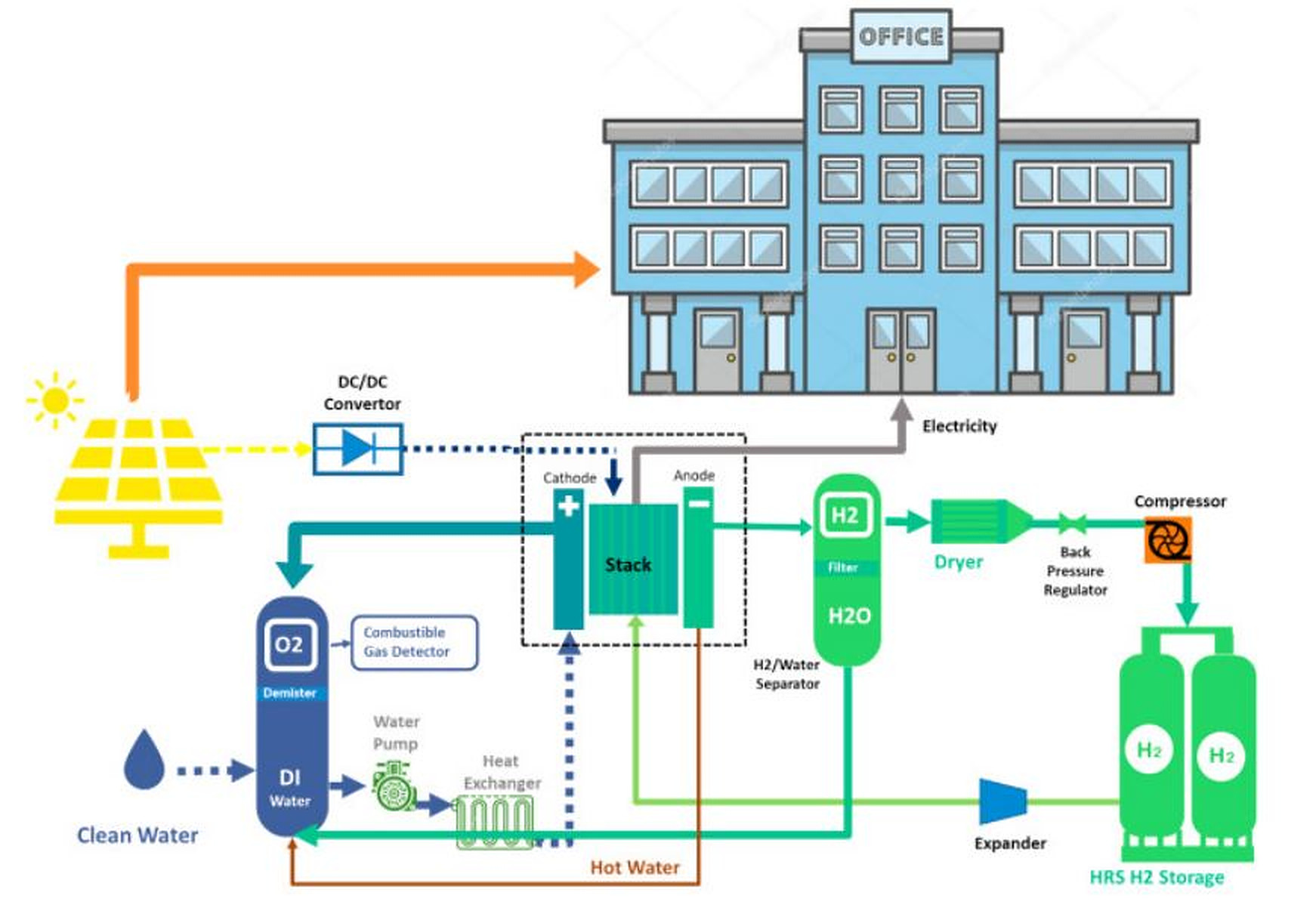
Aiming for net-zero or nearly net-zero energy buildings is now common practice in the construction industry, but to make cities truly sustainable, a larger-scale view is essential.
According to a 2021 International Energy Agency (IEA) report, urban areas are home to nearly half of the global population and contribute 80 percent to worldwide GDP. These bustling centers also consume approximately two-thirds of the global energy supply, leading to over 70 percent of the annual carbon emissions worldwide. The built environment, including residential, commercial, and public buildings, plays a considerable part in this energy demand, making it a focal point for efforts toward urban energy sustainability.
In recent years, there has been a push toward reducing energy use intensity (EUI) within individual buildings. As a result, buildings today are far more energy efficient than they once were. There has also been a notable shift toward localized energy generation, through distributed energy resources, within or in the close vicinity of urban boundaries. Among the diverse range of renewable energy sources, solar photovoltaic (PV) systems have emerged as a key player, owing to their improving technological efficiency and geographical versatility.
To reach net-zero, the buildings sector needs to look beyond the scope of individual buildings and consider the whole urban area. This wider perspective will allow an understanding of the intricate interplay between various components of an urban energy system and the resultant dynamics.
Recognizing this need, Osama Mussawar, PhD student in the Management Science and Engineering and Dr. Ahmad Mayyas, Assistant Professor of Management Science and Engineering, with Elie Azar of Carleton University, have developed a cutting-edge modelling framework that takes into account the built environment’s form and function in an urban area. This approach offers a unique way to study and understand how these factors influence a city’s energy performance. It goes a step further to evaluate how the urban built context impacts the outcomes of various energy policies and solutions. Their framework was published in Sustainable Cities and Society, a top 1% journal in the field of civil and structural engineering.
“By studying the relationship between an urban area’s form and function and its energy performance, we can provide valuable insights for urban planners, policymakers, and energy service providers,” Dr. Mayyas said. “It’s all about developing and implementing energy solutions that are tailored specifically for each urban area, understanding that a one-size-fits-all approach isn’t always the best way forward.”
To demonstrate the effectiveness of the new framework, the researchers produced a case study of two urban areas with different built environments: one with predominantly compact high-rise buildings and one with predominantly compact low-rise buildings. The results revealed a strong correlation between built form and function and energy performance, particularly in the context of using rooftop solar photovoltaic systems.
In compact high-rise areas, which are areas with many tall buildings located close together, the study found that even with rooftop solar PV systems, these areas could not produce enough of their own energy to become fully self-sufficient. This could be due to several factors, such as the limited roof space available for solar panels compared with the high energy demand of the building, shading between high-rise buildings limiting solar energy production, or the high energy use associated with high-rise buildings (e.g., for elevators or HVAC systems).
Despite this, these areas showed high levels of self-consumption, meaning that a large proportion of the energy generated by the solar panels was used directly in the building where it was generated, instead of being exported to the grid. This could be due to the continuous and high energy demand within high-rise buildings.
Interestingly, the presence of more lodging buildings (such as hotels or residential buildings) led to contrasting effects on self-consumption. This could be due to varying energy use patterns in lodging buildings, which may not align well with solar energy production times.
On the other hand, compact low-rise areas, which are areas with shorter buildings located close together, showed more variability in their interaction with the energy grid due to the presence of solar PV systems. In these areas, depending on the time of day and the energy demands of the buildings, they could either be importing energy from the grid or exporting excess solar energy back to the grid.
The study suggests that there is a potential for increased deployment of energy storage solutions in these low-rise areas. Energy storage solutions could store excess solar energy generated during the day for use during nighttime or during periods of high demand. This could increase the self-consumption of solar energy, meaning more of the energy generated by the solar panels is used directly in the building, and reduce the building’s reliance on the energy grid, thereby reducing operating costs.
“The built form and function of an urban area play a pivotal role in determining its energy demand and on-site energy generation potential and are critical determinants of its energy performance and sustainability,” Dr. Mayyas said. “The potential for sustainability innovations is conditioned by the amount of space available, and reaching performance goals is closely linked to the urban context.”
This research provides a fascinating example of how urban planning and sustainable energy solutions can work hand in hand. It demonstrates the need for context-specific energy solutions and the importance of considering the urban built environment’s unique characteristics when designing and implementing these solutions.
The building sector plays an instrumental role in achieving urban energy sustainability, but success involves a complex network of factors. This research offers a novel, integrated approach to understanding and addressing these factors, promising a brighter future for our cities and planet. Future research on this topic can use this scalable and flexible agent-based modeling approach integrating the urban context with energy demand and supply.
Jade Sterling
Science Writer
08 August 2023






